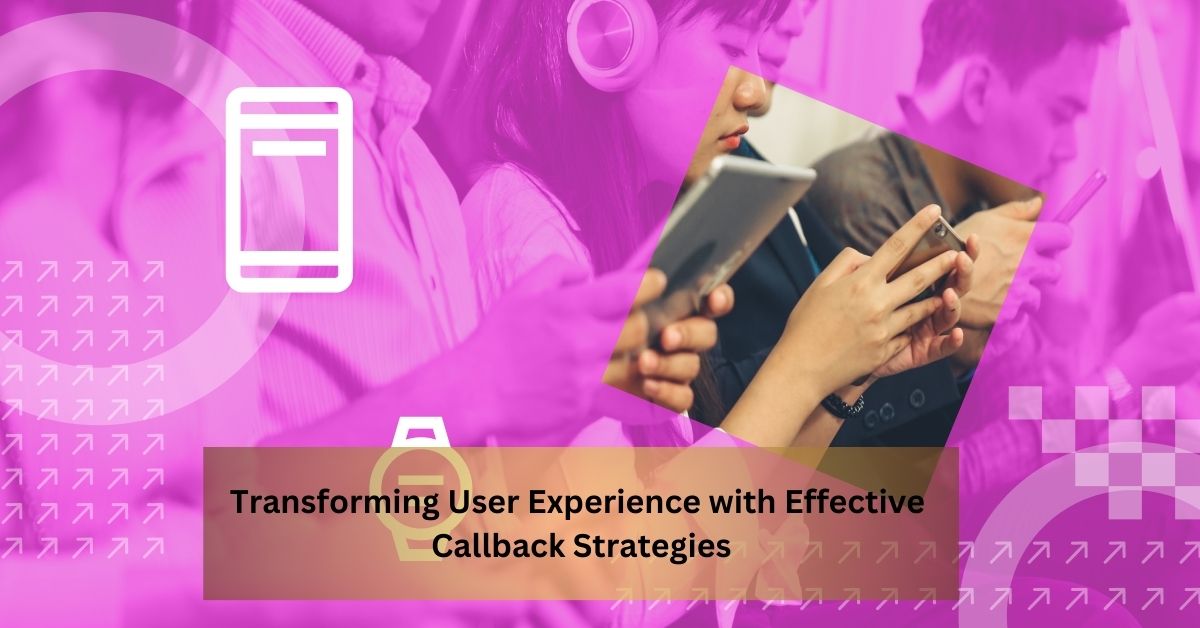The cornerstone of any successful digital strategy is an outstanding user experience. The ability to stand out hinges on a business’s capability to offer not just excellent products or services but also exceptional customer support.
Callback strategies, which allow customers to request a phone call from a business at their convenience, have emerged as a key player in this arena. By prioritizing user convenience and reducing wait times, companies can significantly enhance the overall customer experience. The implementation of effective callback strategies stands out as a transformative approach to improving user experience (UX).
This article delves into how these strategies can revolutionize customer interactions, foster loyalty, and drive business growth by offering personalized, timely, and efficient communication solutions.
Understanding Callback Strategies
Callback strategies involve a system where instead of waiting on hold, customers can choose to have a representative call them back when it’s their turn. This approach respects the customer’s time and transforms potentially frustrating wait times into a positive interaction. Moreover, advanced callback solutions integrate with customer relationship management (CRM) systems, providing representatives with valuable context before the call, further personalizing the experience.
Benefits of Implementing Callback Strategies
- Enhanced Customer Satisfaction: By eliminating long wait times and offering callbacks at a time that suits the customer, businesses can significantly improve satisfaction levels. This approach demonstrates respect for the customer’s time, a crucial factor in building trust and loyalty.
- Increased Efficiency: Callbacks help manage call center traffic more effectively, allowing businesses to optimize their workforce and reduce the pressure on customer service representatives. This efficiency can lead to faster resolution times and higher-quality interactions.
- Improved Conversion Rates: Engaging customers through callbacks can also lead to higher conversion rates. A timely callback, especially when a customer is considering a purchase or needs support, can be the deciding factor in their decision-making process.
- Reduced Abandonment Rates: Many customers, faced with long wait times, simply hang up, potentially seeking solutions from competitors. Callback strategies can significantly reduce these abandonment rates by offering an alternative to waiting.
Strategies for Effective Callback Integration
For callbacks to transform user experience effectively, they must be strategically integrated into the customer service framework. Here are some strategies to ensure their success:
- Seamless Integration with Digital Platforms: Callback options should be easily accessible across all digital touchpoints, including websites, mobile apps, and social media platforms. This accessibility ensures that customers can request callbacks from whatever channel they prefer.
- Personalized Customer Interactions: Utilize customer data to personalize callback interactions. When a representative calls back, having the customer’s history and context at hand can make the conversation more relevant and efficient, greatly enhancing the customer’s experience.
- Optimizing Timing for Callbacks: Implement systems that predict the best time to call back customers based on historical data and current queue times. This predictive approach can further increase customer satisfaction by ensuring callbacks occur at the most convenient times.
- Training and Empowering Employees: Employees should be trained not only on the technical aspects of managing callbacks but also on communication skills that enhance customer interactions. Empowering them with information about the customer’s previous interactions and potential needs can lead to more productive and satisfying calls.
Challenges in Callback Strategy Implementation
While the benefits are clear, implementing an effective callback strategy does come with its challenges. These include ensuring the technology seamlessly integrates with existing systems, managing customer expectations regarding callback times, and training staff to handle these interactions effectively. Overcoming these challenges requires a commitment to ongoing training, investment in technology, and a focus on continuous improvement.
Measuring the Success of Callback Strategies
To truly understand the impact of callback strategies on user experience, businesses must measure their effectiveness. Key performance indicators (KPIs) such as reduction in abandonment rates, improvement in customer satisfaction scores, and an increase in conversion rates can offer insights into the success of these strategies. Regularly reviewing these metrics can help businesses refine their approach and further enhance the customer experience.
Future of Callback Strategies
As technology continues to advance, the future of callback strategies looks promising. Innovations in artificial intelligence (AI) and machine learning could offer even more personalized and efficient callback experiences. For instance, AI could predict the exact moment a customer requires assistance, initiating a callback proactively. Furthermore, integrating callback strategies with other technologies like chatbots or using email sign up template could provide a seamless transition from digital to human interaction, offering customers a comprehensive support ecosystem.

Conclusion
Implementing effective callback strategies represents a significant opportunity for businesses to transform their user experience. By prioritizing customer convenience, personalizing interactions, and optimizing operational efficiency, companies can foster loyalty, drive conversions, and stand out in a competitive digital marketplace.
Adopting these innovative callback practices both elevates the quality of customer service and sets a foundation for building enduring relationships and achieving sustained growth in the evolving landscape of digital commerce.


